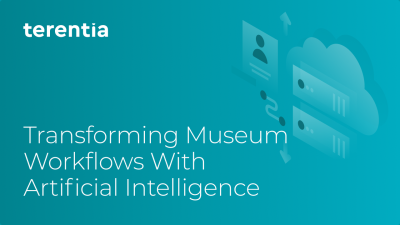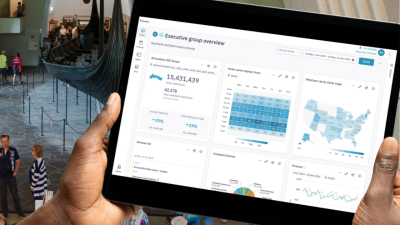I hope you have been following my posts on the Forecast of the Future of Museum Ethics being conducted by CFM and the Institute for Museum Ethics at Seton Hall University. CFM and IME staff are compiling the (copious) input provide by our Oracles and over one hundred public participants. While we wrestle this into a report for Oracular review and subsequent release, I want to share these thoughts from one of our Oracles, Fred Stielow, VP and Dean of Libraries, Course Materials and e-Press at the American Public University System (APUS). Fred recently shot us some observations from his Blackberry while flying at 30,000 feet, pushing us to question our deeper assumptions and (re)start from a radically revised understanding of “museum” in the 21st century.
AAM is currently attempting to forecast some 25 years into the future. The questions in the forecast are rooted in the defining National Standards and Best Practices for U.S. Museums. My experience with the forecast to date reflects a solid exercise. The questions are appropriately phrased and the Likert scaling fits.
Yet, something is also off-kilter—or at least for someone like me who operates virtual information systems within a fully online university. I think the forecast reflects a vision still rooted in the 19th century. In that century, nationalistic forces (aided by an emerging mass press) enabled new social spaces for public “culture,” edification and education. The idea of “museum” was soon split into independent archival, library and museum institutions.
Those creations still exist, but the underlying model and the justifications for it are changing. First-World countries no longer have the same burning need to establish and underwrite their legitimacy through public educational institutions. Equally important, we have entered a communications revolution on par with the introduction of print. The Web is not just another technological tool. It is immersive and all-encompassing.
Skip over related stories to continue reading articleTo project the future without an (alternate) starting point in the virtual realm simply seems questionable. The assumptions certainly are different if you start there. Applications on the Web are tantamount to publishing. They raise separate sets of ethical questions in terms of access, but also crucial economic and identity matters with ethical implications.
The triumphal rise of Web 2.0 is similarly hard to ignore. The Web’s Long Tail and community-building functions proffer a far different concept of membership than spatially-defined quarters with local identifications.
On the Information Highway, comfortable walls between archives, libraries and museums vanish. Cultural institutions and massive projects that unite many institutions, like Europeana. There the drive is widespread digitizing and Open Access in the hopes of fostering a new Renaissance. Yet, such altruism can mask a myriad of ethical and identity issues–as well as economic opportunities. Such impacts may also merit review.
The wonk in me cries out for considerations of a near future with augmented reality. Ubiquitous computing is also on the horizon. Everything around you can become a source of interactive information and personalized for the receiver. And all of this has ethical implications.
In sum, I find the present survey adequate for what it is; however, the view from 30,000 feet suggests something more to truly address the future.
Do you have a 30,000 foot view of the future you would like to share with readers? Email me at futureofmuseums@aam-us.org to pitch your idea for a guest post on the blog, and comment on Fred’s vision below.









As one of the participants in the Future of Museum Ethics Forecast instrument, I found this post to be extremely inspiring. The importance and, as stated, immersive quality of the Web is something that shouldn't be ignored and should likely be re-framing the whole conversation for the future of museums (and the walls coming down between libraries, archives, and community spaces.)
My 30,000 foot view of the future involves opening up authority. I define what I mean in this blog post via the New Media Consortium: http://midea.nmc.org/2012/01/defining-open-authority-in-museums/